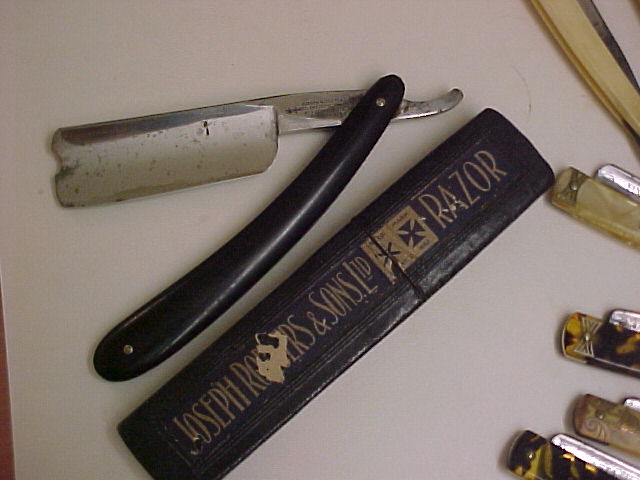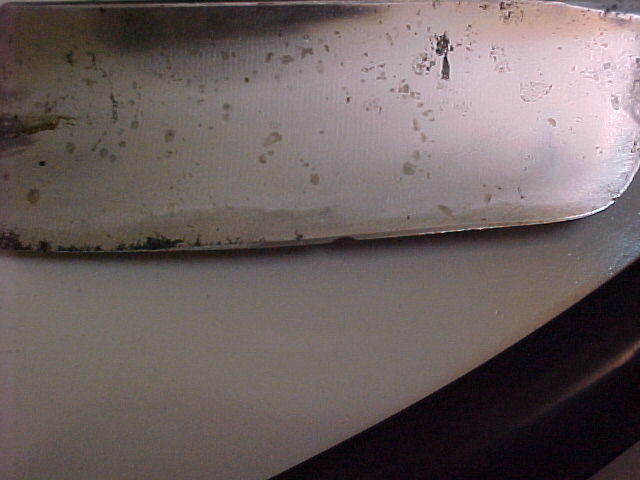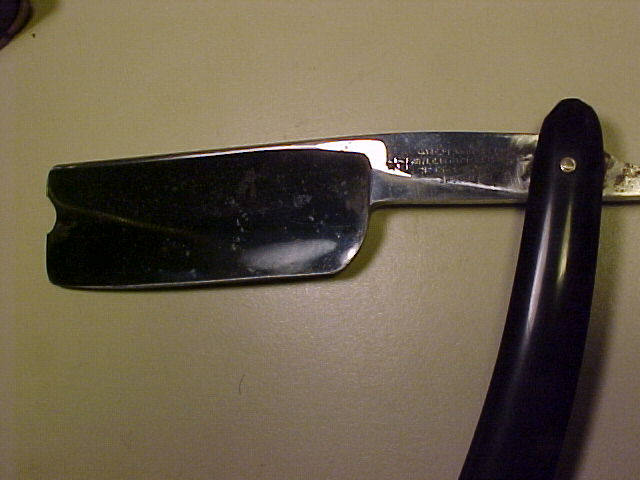Results 21 to 28 of 28
-
10-07-2016, 09:49 PM #21At this point in time...




- Join Date
- Jun 2007
- Location
- North Idaho Redoubt
- Posts
- 26,960
- Blog Entries
- 1
Thanked: 13226
I guess my pet peeve is always the same
Much like Bevel Setting has a zero sum definition from Edge Restoration to just a simple evening up the the two sides
The Term Breadknifing can mean from the extreme option to the subtle killing of the edge or "Jointing" and at multiple angles too
I get so tired of hearing it takes too long or it wastes steel when both have been proved wrong, but the myths continue..
No worries, has bugged me for years
-
10-07-2016, 10:03 PM #22

Well I would say there are degrees. Each blade has to be examined on the condition of the edge. For instance, this Joseph Rogers in the pic was one ..... the first one I bread knifed. Because of the size of the chip I might do that again.
OTOH, that was before Lynn Abrams introduced circle honing to the forum in '08 I think it was. But this razor was a bear even breadknifing on a diamond plate. It was a 10/8 when I began and a hair less than 9/8 when I finished.


Getting the bevel back took a hell or a lot of time. That particular razor, with the tools & knowledge I had at that time, breadknifing was the best option.

When I refer to it being 'more work', in my case it is a fact. I can't speak for anyone else's experience.Be careful how you treat people on your way up, you may meet them again on your way back down.
-
The Following User Says Thank You to JimmyHAD For This Useful Post:
Slawman (10-12-2016)
-
10-07-2016, 10:12 PM #23Senior Member



- Join Date
- Dec 2013
- Location
- Virginia
- Posts
- 1,516
Thanked: 237
I'm surprised you lost more than 1/8. That chip looks small.
-
10-07-2016, 10:22 PM #24

Notice that it was the width of the existing bevel, maybe a bit more in the hand, than in the picture. Then, after the bread knifing you have to remove steel to get a bevel back. Took a long time to get the chip out ......... many sessions, and a longer time to get the bevel, sharpen and finish.Very tough steel in that animal.
Be careful how you treat people on your way up, you may meet them again on your way back down.
-
10-08-2016, 02:49 PM #25Senior Member



- Join Date
- Apr 2012
- Location
- Diamond Bar, CA
- Posts
- 6,553
Thanked: 3215 Video Attachment correction
Video Attachment correction
I too never understood the Bread-knifing bias.
Years ago I was taught by a master carver to sharpen chisels, hone 90 degrees to the edge to remove a chip and get to solid steel. Then sharpen the bevel, by first honing at 45 degrees, to near meeting, then honing at the proper degree. It only takes a minute to do it that way on a grinding wheel or stone.
The same for a razor, remove the chip, then high angle hone the razor (45 degrees), with the spine off the hone, to where the bevels are almost meeting. Then hone normally, you should be able to set the bevel in a few minutes.
Either way, you will remove exactly the same amount of material.Last edited by Hirlau; 10-08-2016 at 07:22 PM. Reason: Correcting Video Attachment By Member request
-
The Following User Says Thank You to Euclid440 For This Useful Post:
Slawman (10-12-2016)
-
10-08-2016, 03:01 PM #26Senior Member



- Join Date
- Apr 2012
- Location
- Diamond Bar, CA
- Posts
- 6,553
Thanked: 3215 Assisted With Video Attachment
Assisted With Video Attachment
here is the Stanley razor honing video,
Last edited by Hirlau; 10-08-2016 at 07:19 PM. Reason: Video not loaded to post properly, member asked for assistance.
-
10-08-2016, 11:48 PM #27
-
10-10-2016, 02:05 AM #28

I remember the term being used on usenet knife boards long before I knew there were straight razor forums.


 37Likes
37Likes LinkBack URL
LinkBack URL About LinkBacks
About LinkBacks






 Reply With Quote
Reply With Quote

